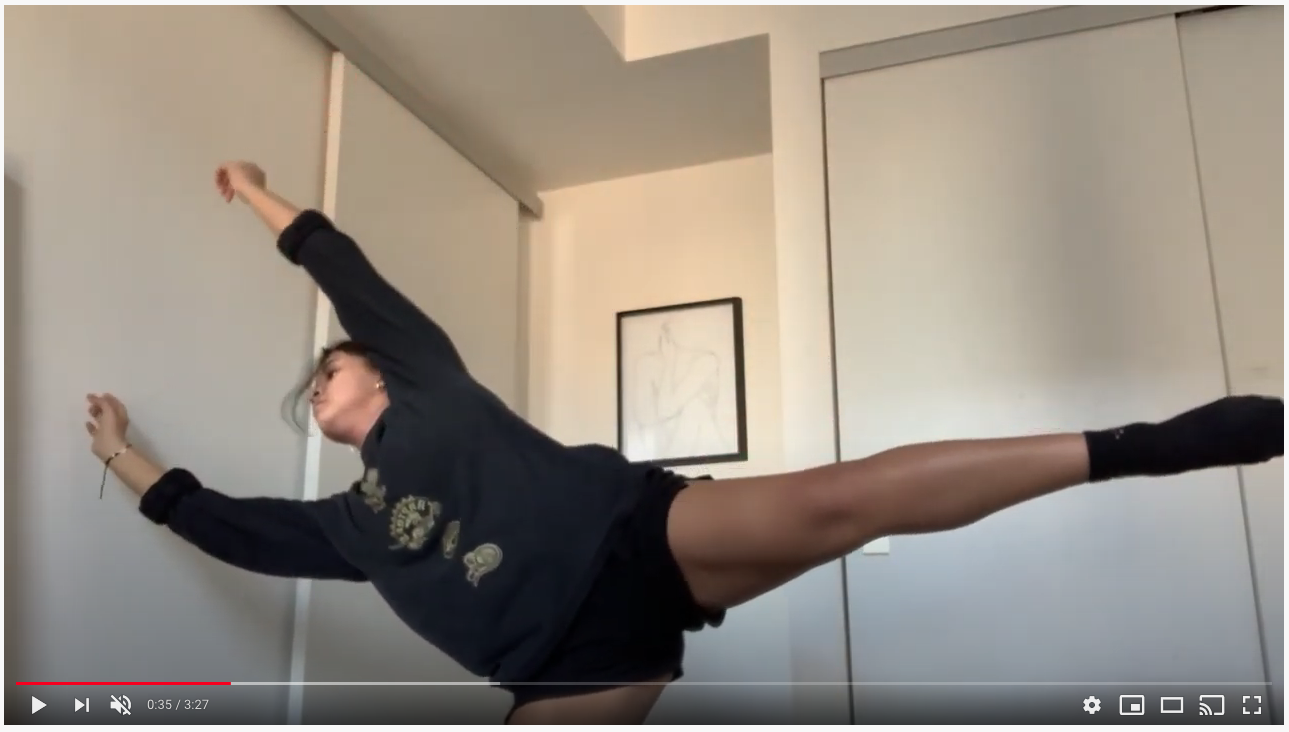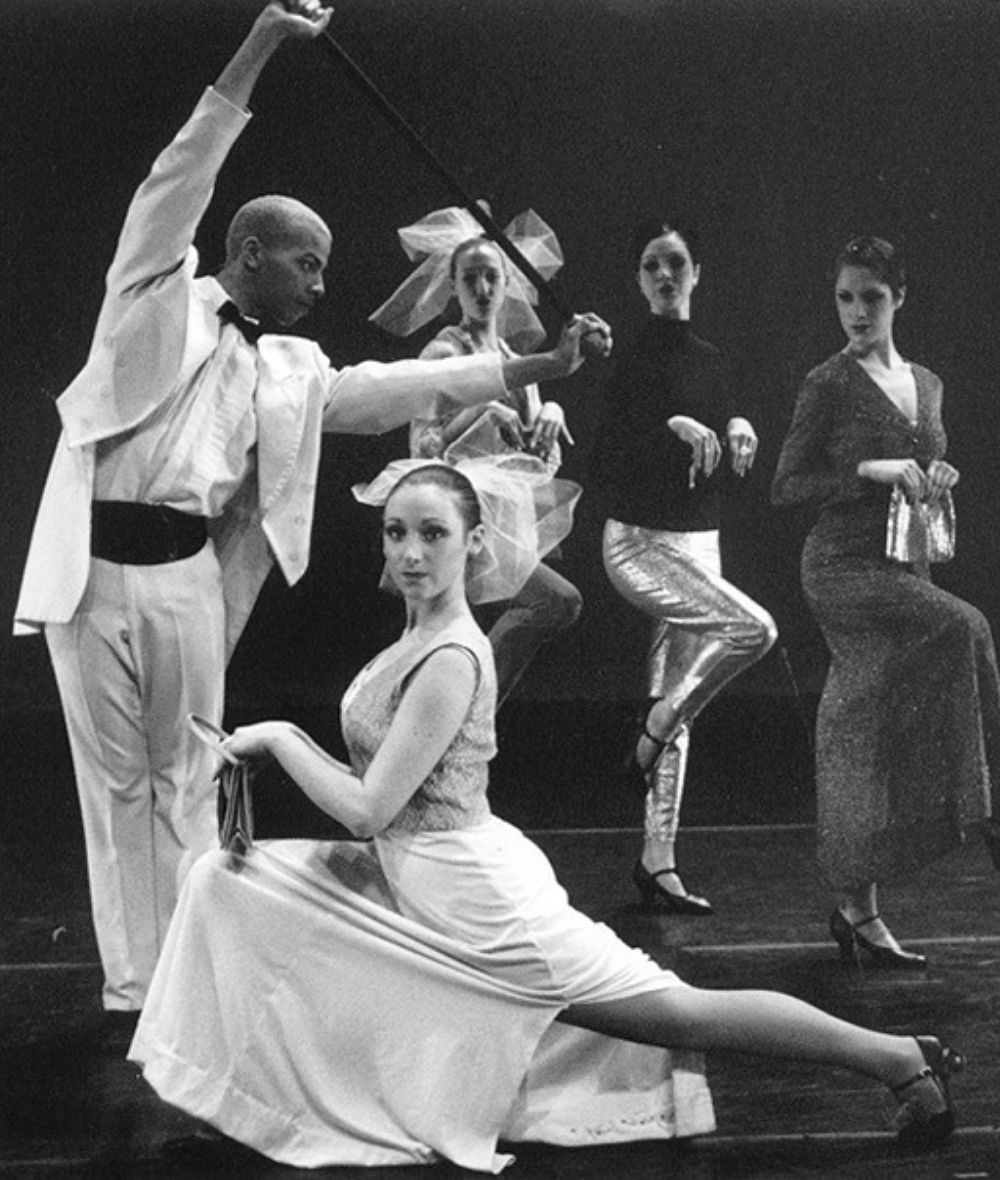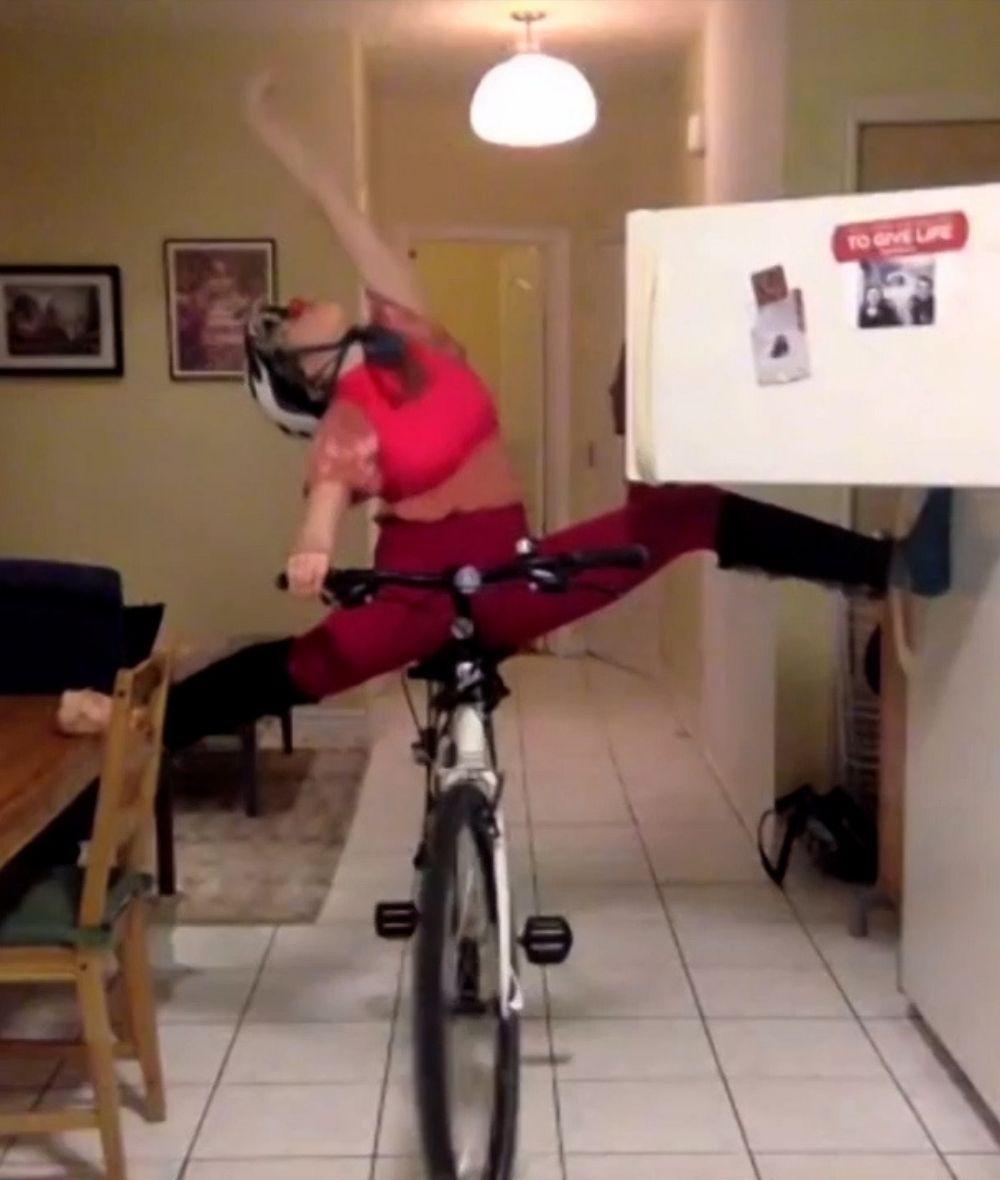Teaching During a Pandemic
Assistant Professor in Dance, Louis Laberge-Côté reflects of teaching in a year like no other.


The performing arts sector — and particularly dance — was deeply impacted by COVID. As performance venues and rehearsals spaces closed their doors, most dance-related projects were either postponed or cancelled.
Since they typically involve a group of people sweating in close proximity in relatively small indoor spaces, many dance training opportunities were also cancelled. However, despite many unavoidable challenges, teachers, studios, companies and training institutions all over the world found creative ways to keep dancers physically and creatively engaged throughout these unusual times.
The School of Performance responded with flexibility to the limitations imposed by the pandemic. Online training was offered throughout the 2020-2021 school year, while in-person training was provided in a limited capacity through various modules, whenever possible.
This new format gave the students an opportunity to study with more instructors and in a broader range of styles, including African, Pilates, Gaga-inspired movement research, and House/ vernacular jazz.
I had the chance to teach modern, contemporary and improvisation in both the online and in-person formats throughout the year— each with its own set of advantages and challenges.
I had never taught online before the pandemic, so transferring my dance classes online required many adjustments. For example, most students did not have access to the same amount of space we normally have when we train in our studios, making all travelling sequences impossible to execute safely. Therefore, all movement sequences had to cover a minimal amount of space. Also, since most surfaces on which the students trained were not sprung, jumps had to be either avoided or executed in a minimal capacity — and with lots of caution. To minimize the risk of technical glitches due to connectivity issues, I also chose not to work with live music and designed all of my online classes off of pre-recorded soundscapes. However, even with recorded music, there is always a noticeable delay between the sound and the on-screen visuals. This ongoing lag makes it very challenging to give the students any feedback on their musicality — one of the primary components of dance training.
However, beyond these practical challenges, it quickly became clear to me that, on a deeper level, online dance training is inevitably a compromise compared to the in-studio education we usually provide. Dance is highly experiential by nature. In addition to the mental skills (remembering steps, recognizing patterns, and understanding movement concepts) and basic physical notions (developing strength, flexibility, stamina, coordination, and control), there is a substantial amount of artistic and sensory knowledge that can’t be adequately transferred without a shared, direct human experience. Non-verbal communication — which is significantly compromised through online platforms — is key to acquiring such deeply-felt bodily intelligence.

A student takes Louis' class online from their home.
In this context, I often chose to lead “warm-up” classes (with little explanation on steps and movement concepts). However, some classes needed further specificity and clarification, particularly with the first-year students. With compromised non-verbal communication, I relied more on language-based instruction. While this approach is ultimately not ideal for dance, there was also an interesting silver lining: spending time breaking down abstract movement concepts and figuring out how to explain them only through words brought a new sense of clarity to my pedagogical intentions.
While teaching during the in-person modules felt more familiar, classes were still modified in multiple ways. Students had to respect social distancing at all times, so they were assigned a specific area of the studio, which limited the amount of space each movement sequence could cover. For the last section of my classes — which always contains travelling phrases —
students were not required to remain in their individual “boxes” anymore, but all floor work had to be avoided by that point, significantly reducing our movement repertoire.
However, the biggest challenge with the in-person format was having to work with a mask. Several students struggled with breathing, so teaching with this added difficulty often became about finding the delicate balance between giving the students a chance to be highly physical and making sure they could still breathe properly. The mask was also a significant challenge for the teacher. In addition to having to “yell” information to the students on top of loud music, often while dancing themselves — something highly demanding even in normal circumstances — teachers had to make sure they projected their voice through the mask with compromised breathing capacity. The mixture of social distancing, half-covered faces, and breathing difficulties made the experience feel noticeably more demanding and less “human” than usual. Nonetheless, despite these various challenges, it was such an incredible pleasure to be in the studio and get a taste of what truly physical, musical and collective dancing feels like.
Without a doubt, it’s been a challenging year, full of limitations and compromises. However, watching the students work through the pandemic greatly inspired me. Paradoxically, while COVID may have interrupted some opportunities for training, collaboration and conventional presentations, due to the artists’ resiliency, diligence and imagination, it has also opened up many other avenues for performance, education, viewing and creation. COVID has reminded us of the value and transformative power of the arts for individuals and our communities and has further strengthened my faith in bodily wisdom and artistic expression.
For those interested, here are two links to videos I made for the dance students in the spring of 2020. The first one is a 80-minute “follow along” movement/warm-up sequence. The second video is a guided mental imagery meditation specifically made for dancers. I hope you enjoy!
Movement Sequence
Meditation
Louis Laberge-Côté

Louis Laberge-Côté is an Assistant Professor of Dance at Toronto Metropolitan University, School of Performance, since July 2018. He teaches modern and contemporary dance, improvisation, composition, and creative performance studies. He is the producer of Choreographic Works.


